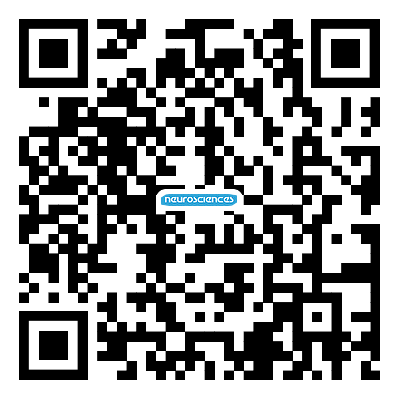REFERENCES
1. Singh A, Tetreault L, Kalsi-Ryan S, Nouri A, Fehlings MG. Global prevalence and incidence of traumatic spinal cord injury. Clin Epidemiol 2014;6:309-31.
2. Musubire AK, Meya DB, Bohjanen PR, Katabira ET, Barasukana P, et al. A systematic review of non-traumatic spinal cord injuries in sub-Saharan Africa and a proposed diagnostic algorithm for resource-limited settings. Front Neurol 2017;8:618.
3. Hagen EM, Rekand T, Gilhus NE, Grønning M. Traumatic spinal cord injuries - incidence, mechanisms and course. Tidsskr Nor Laegeforen 2012;132:831-7.
4. van Middendorp JJ, Goss B, Urquhart S, Atresh S, Williams RP, et al. Diagnosis and prognosis of traumatic spinal cord injury. Global Spine J 2011;1:1-8.
5. Simon F, Oberhuber A. Ischemia and reperfusion injury of the spinal cord: experimental strategies to examine postischemic paraplegia. Neural Regen Res 2016;11:414-5.
6. Marsala M, Sorkin LS, Yaksh TL. Transient spinal ischemia in rat: characterization of spinal cord blood flow, extracellular amino acid release, and concurrent histopathological damage. J Cereb Blood Flow Metab 1994;14:604-14.
7. Alizadeh A, Dyck SM, Karimi-Abdolrezaee S. Traumatic spinal cord injury: an overview of pathophysiology, models and acute injury mechanisms. Front Neurol 2019;10:282.
8. Hassannejad Z, Shakouri-Motlagh A, Mokhatab M, Zadegan SA, Sharif-Alhoseini M, et al. Oligodendrogliogenesis and axon remyelination after traumatic spinal cord injuries in animal studies: a systematic review. Neuroscience 2019;402:37-50.
9. Carlson SL, Parrish ME, Springer JE, Doty K, Dossett L. Acute inflammatory response in spinal cord following impact injury. Exp Neurol 1998;151:77-88.
10. Li N, Leung GK. Oligodendrocyte precursor cells in spinal cord injury: a review and update. Biomed Res Int 2015;2015:235195.
11. Arnold SA, Hagg T. Anti-inflammatory treatments during the chronic phase of spinal cord injury improve locomotor function in adult mice. J Neurotrauma 2011;28:1995-2002.
12. Ray SK, Hogan EL, Banik NL. Calpain in the pathophysiology of spinal cord injury: neuroprotection with calpain inhibitors. Brain Res Rev 2003;42:169-85.
13. Ray SK, Samantaray S, Smith JA, Matzelle DD, Das A, Banik NL. Inhibition of cysteine proteases in acute and chronic spinal cord injury. Neurotherapeutics 2011;8:180-6.
14. Plemel JR, Keough MB, Duncan GJ, Sparling JS, Yong VW, et al. Remyelination after spinal cord injury: is it a target for repair? Prog Neurobiol 2014;117:54-72.
15. Wang RN, Green J, Wang Z, Deng Y, Qiao M, et al. Bone morphogenetic protein (BMP) signaling in development and human diseases. Genes Dis 2014;1:87-105.
16. Enzmann GU, Benton RL, Woock JP, Howard RM, Tsoulfas P, et al. Consequences of noggin expression by neural stem, glial, and neuronal precursor cells engrafted into the injured spinal cord. Exp Neurol 2005;195:293-304.
17. Horbelt D, Denkis A, Knaus P. A portrait of transforming growth factor β superfamily signalling: background matters. Int J Biochem Cell Biol 2012;44:469-74.
19. Imamura T, Takase M, Nishihara A, Oeda E, Hanai J, et al. Smad6 inhibits signalling by the TGF-β superfamily. Nature 1997;389:622-6.
20. Hanyu A, Ishidou Y, Ebisawa T, Shimanuki T, Imamura T, et al. The N domain of Smad7 is essential for specific inhibition of transforming growth factor-beta signaling. J Cell Biol 2001;155:1017-27.
21. Hata A, Lagna G, Massagué J, Hemmati-Brivanlou A. Smad6 inhibits BMP/Smad1 signaling by specifically competing with the Smad4 tumor suppressor. Genes Dev 1998;12:186-97.
22. Zimmerman LB, De Jesús-Escobar JM, Harland RM. The Spemann organizer signal noggin binds and inactivates bone morphogenetic protein 4. Cell 1996;86:599-606.
23. Matsuura I, Taniguchi J, Hata K, Saeki N, Yamashita T. BMP inhibition enhances axonal growth and functional recovery after spinal cord injury. J Neurochem 2008;105:1471-9.
24. de Rivero Vaccari JP, Marcillo A, Nonner D, Dietrich WD, Keane RW. Neuroprotective effects of bone morphogenetic protein 7 (BMP7) treatment after spinal cord injury. Neurosci Lett 2009;465:226-9.
25. Song P, Xia X, Han T, Fang H, Wang Y, et al. BMSCs promote the differentiation of NSCs into oligodendrocytes via mediating Id2 and Olig expression through BMP/Smad signaling pathway. Biosci Rep 2018;38:BSR20180303.
26. Sahni V, Mukhopadhyay A, Tysseling V, Hebert A, Birch D, et al. BMPR1a and BMPR1b signaling exert opposing effects on gliosis after spinal cord injury. J Neurosci 2010;30:1839-55.
27. Setoguchi T, Yone K, Matsuoka E, Takenouchi H, Nakashima K, et al. Traumatic injury-induced BMP7 expression in the adult rat spinal cord. Brain Res 2001;921:219-25.
28. Chen J, Leong SY, Schachner M. Differential expression of cell fate determinants in neurons and glial cells of adult mouse spinal cord after compression injury. Eur J Neurosci 2005;22:1895-906.
29. Cui ZS, Zhao P, Jia CX, Liu HJ, Qi R, et al. Local expression and role of BMP-2/4 in injured spinal cord. Genet Mol Res 2015;14:9109-17.
30. Kim JH, Lee YW, Park YM, Park KA, Park SH, et al. Agmatine-reduced collagen scar area accompanied with surface righting reflex recovery after complete transection spinal cord injury. Spine (Phila Pa 1976) 2011;36:2130-8.
31. Park YM, Lee WT, Bokara KK, Seo SK, Park SH, et al. The multifaceted effects of agmatine on functional recovery after spinal cord injury through Modulations of BMP-2/4/7 expressions in neurons and glial cells. PLoS One 2013;8:e53911.
32. Dmitriev AE, Farhang S, Lehman RA, Ling GS, Symes AJ. Bone morphogenetic protein-2 used in spinal fusion with spinal cord injury penetrates intrathecally and elicits a functional signaling cascade. Spine J 2010;10:16-25.
33. Ahmed S, Gull A, Khuroo T, Aqil M, Sultana Y. Glial cell: a potential target for cellular and drug based therapy in various CNS diseases. Curr Pharm Des 2017;23:2389-99.
34. Okada S, Hara M, Kobayakawa K, Matsumoto Y, Nakashima Y. Astrocyte reactivity and astrogliosis after spinal cord injury. Neurosci Res 2018;126:39-43.
35. Wang H, Song G, Chuang H, Chiu C, Abdelmaksoud A, et al. Portrait of glial scar in neurological diseases. Int J Immunopathol Pharmacol 2018;31:2058738418801406.
36. Wang Y, Cheng X, He Q, Zheng Y, Kim DH, et al. Astrocytes from the contused spinal cord inhibit oligodendrocyte differentiation of adult oligodendrocyte precursor cells by increasing the expression of bone morphogenetic proteins. J Neurosci 2011;31:6053-8.
37. Xiao Q, Du Y, Wu W, Yip HK. Bone morphogenetic proteins mediate cellular response and, together with Noggin, regulate astrocyte differentiation after spinal cord injury. Exp Neurol 2010;221:353-66.
38. Setoguchi T, Nakashima K, Takizawa T, Yanagisawa M, Ochiai W, et al. Treatment of spinal cord injury by transplantation of fetal neural precursor cells engineered to express BMP inhibitor. Exp Neurol 2004;189:33-44.
39. North HA, Pan L, McGuire TL, Brooker S, Kessler JA. β1-Integrin alters ependymal stem cell BMP receptor localization and attenuates astrogliosis after spinal cord injury. J Neurosci 2015;35:3725-33.
40. Lü HZ, Wang YX, Zou J, Li Y, Fu SL, et al. Differentiation of neural precursor cell-derived oligodendrocyte progenitor cells following transplantation into normal and injured spinal cords. Differentiation 2010;80:228-40.
41. Karimi-Abdolrezaee S, Billakanti R. Reactive astrogliosis after spinal cord injury-beneficial and detrimental effects. Mol Neurobiol 2012;46:251-64.
42. Parikh P, Hao Y, Hosseinkhani M, Patil SB, Huntley GW, et al. Regeneration of axons in injured spinal cord by activation of bone morphogenetic protein/Smad1 signaling pathway in adult neurons. Proc Natl Acad Sci U S A 2011;108:E99-107.
43. Glick D, Barth S, Macleod KF. Autophagy: cellular and molecular mechanisms. J Pathol 2010;221:3-12.
45. Zhang XJ, Chen S, Huang KX, Le WD. Why should autophagic flux be assessed? Acta Pharmacol Sin 2013;34:595-9.
46. Wong YC, Holzbaur EL. Autophagosome dynamics in neurodegeneration at a glance. J Cell Sci 2015;128:1259-67.
47. Liu S, Sarkar C, Dinizo M, Faden AI, Koh EY, et al. Disrupted autophagy after spinal cord injury is associated with ER stress and neuronal cell death. Cell Death Dis 2015;6:e1582.
48. Saraswat Ohri S, Bankston AN, Mullins SA, Liu Y, Andres KR, et al. Blocking autophagy in oligodendrocytes limits functional recovery after spinal cord injury. J Neurosci 2018;38:5900-12.
49. Zhou KL, Chen DH, Jin HM, Wu K, Wang XY, et al. Effects of calcitriol on experimental spinal cord injury in rats. Spinal Cord 2016;54:510-6.
50. Zhang D, Xuan J, Zheng BB, Zhou YL, Lin Y, et al. Metformin improves functional recovery after spinal cord injury via autophagy flux stimulation. Mol Neurobiol 2017;54:3327-41.
51. Chen HC, Hsu PW, Tzaan WC, Lee AW. Effects of the combined administration of vitamins C and E on the oxidative stress status and programmed cell death pathways after experimental spinal cord injury. Spinal Cord 2014;52:24-8.
52. Tramullas M, Lantero A, Díaz A, Morchón N, Merino D, et al. BAMBI (bone morphogenetic protein and activin membrane-bound inhibitor) reveals the involvement of the transforming growth factor-beta family in pain modulation. J Neurosci 2010;30:1502-11.
53. Trivedi A, Olivas AD, Noble-Haeusslein LJ. Inflammation and spinal cord injury: infiltrating leukocytes as determinants of injury and repair processes. Clin Neurosci Res 2006;6:283-92.
54. Yang Y, Guo C, Liao B, Cao J, Liang C, He X. BAMBI inhibits inflammation through the activation of autophagy in experimental spinal cord injury. Int J Mol Med 2017;39:423-29.
55. Almad A, Sahinkaya FR, McTigue DM. Oligodendrocyte fate after spinal cord injury. Neurotherapeutics 2011;8:262-73.
56. Wang X, Xu JM, Wang YP, Yang L, Li ZJ. Protective effects of BMP-7 against tumor necrosis factor α-induced oligodendrocyte apoptosis. Int J Dev Neurosci 2016;53:10-17.





